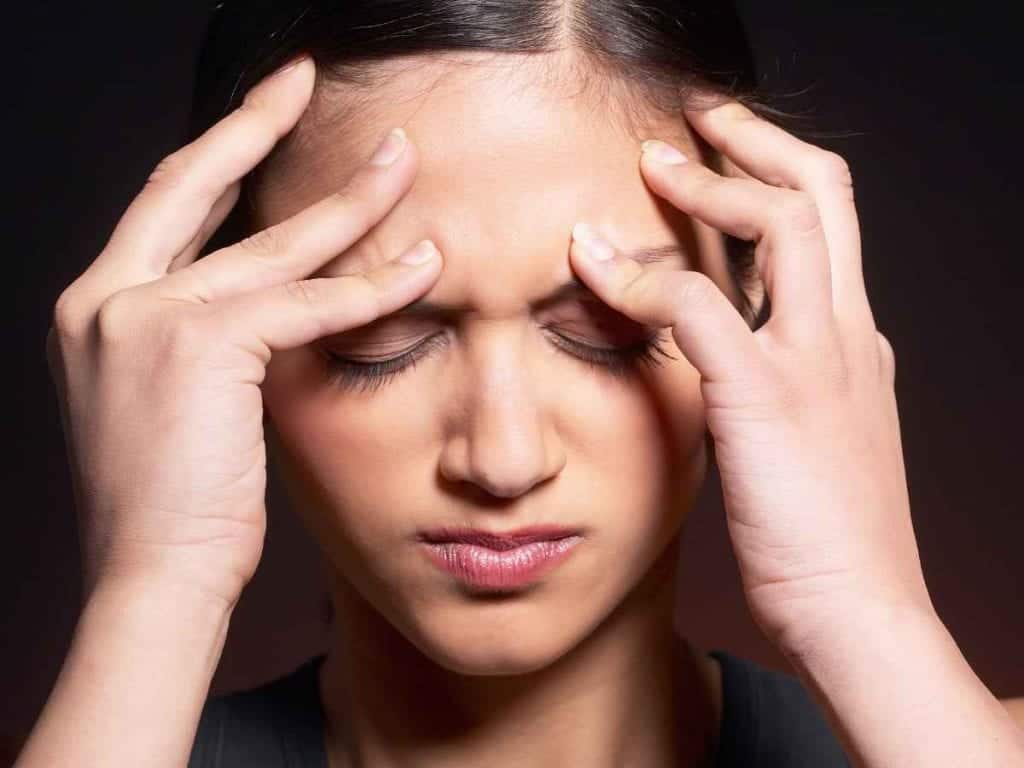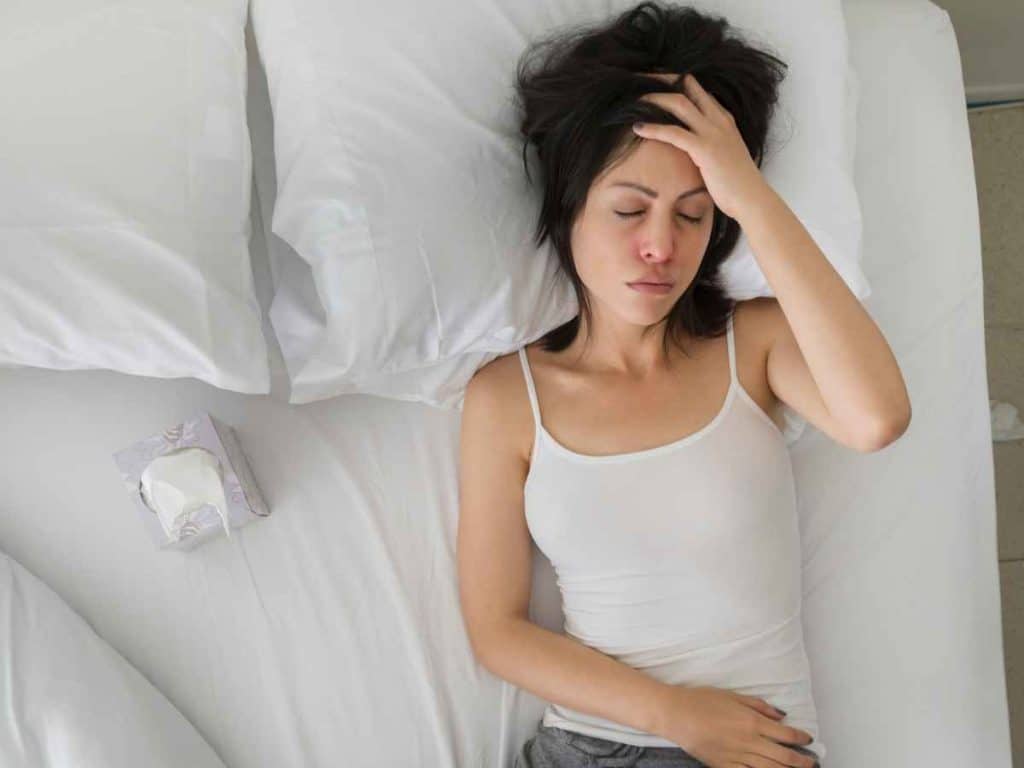
Can migraine cause a stroke? Claims of a link between migraine and stroke have been reported in the media, leaving migraine sufferers worried and confused about their condition. While many of these news stories have been wildly exaggerated, extensive research has been conducted into the relationship between migraine and stroke.
Migraine
Migraine is a debilitating neurological condition that has been categorized by the World Health Organization (WHO) as one of the top 20 most disabling lifelong conditions. Migraine affects people of all ages, including children, with twice as many women affected as men. Migraine can have a devastating impact on the lives of sufferers, affecting their physical and mental health, as well as their work and home life.
Common symptoms include severe headache, which is usually experienced as an intense pounding on one side of the head, gastrointestinal problems (nausea, vomiting, diarrhea), neurological symptoms (tingling, pins and needles, numbness) and visual disturbances. About 25 percent of migraine sufferers also experience other symptoms, known as migraine aurae, such as mood changes, food cravings, and increased sensitivity to light, before an attack.
Despite extensive research into the condition, the cause of migraine is not yet known and there is no cure. Treatment is geared toward managing the condition and enabling sufferers to live as normal a life as possible.
Stroke
A stroke is a potentially fatal event that occurs when the oxygen supply to the brain is interrupted. While many people make a full recovery, stroke survivors are often left with lifelong disabilities, such as speech difficulties and cognitive impairment. Stroke affects twice as many men as women, with smoking, obesity, and high blood pressure being among the highest risk factors.
There are two kinds of stroke – hemorrhagic and ischemic. Hemorrhagic strokes happen when your artery becomes fragile or damaged and bursts around the surrounding tissues. However, academic researches show no link found between migraine and this type of stroke. Meanwhile, ischemic strokes befall when the amount of supply of oxygen and blood lessened, usually, as the result of a clot. Studies have found a give-and-take relationship between migraine and ischemic stroke.
Migraine and Stroke
Several studies have shown a significant increase in the risk of stroke in young women with migraine. While the cause is currently unknown, women under the age of 45 have an increased risk of suffering a stroke if they have migraines, with an even greater risk for those experiencing migraine with aura. The risk is tripled for regular smokers and quadrupled for those taking the combined contraceptive pill. No significant link has been found between migraine and stroke in women over 45 or men.
Numerous studies have shown that young women who smoke, take the oral contraceptive pill and have migraines with aura have the highest increase in stroke risk of all migraine patients. However, put into context, the risk of stroke in women under the age of 45 is still extremely low. One study found that 1 in 100,000 healthy young women will have a stroke, while this increases to 28 in 100,000 for those with migraine and aura who also smoke. Quitting smoking and switching to a different contraceptive method, if necessary, decreases the risk of stroke in young women.
Migrainous Infarction
Migrainous infarction is the name given when an ischemic stroke happens during a migraine. Research has been carried out to discover why some people experience migraine and stroke at the same time, but no evidence has been found to suggest that a stroke is more likely to happen during a migraine attack than at any other time. Currently, research indicates that, while the migraine and stroke may happen simultaneously, they are independent of one another.
TIAs
TIAs (transient ischemic attacks), sometimes known as mini-strokes, can have similar symptoms to migraines with aura, leading to them being wrongly identified as migraine attacks. Any new, unusually severe or prolonged symptoms experienced during a migraine attack should be investigated by a doctor, as they could be a sign of a TIA.
Research into the link between migraine and stroke is ongoing, but the results so far show that only women under the age of 45 are affected. While there is evidence of an increased risk of stroke in young women who experience migraine with aura, the risks are still extremely low and can be further decreased by quitting smoking and switching to a different contraception method, where necessary.

How to prevent a migraine before it happens?
While one can never avoid the condition, you can point to specific triggers that initiate the cause of headaches. When you identify these triggers, you can prevent a migraine before it happens.
You’ll be surprised to know that factors such as lack of sleep, skipped meals, liquor, and caffeine, and stress is among the common causes of migraines. A lifestyle check is needed to avoid a throbbing head.
Break out from situations that induce bright lights and loud noises
Overstimulation of your sensory receptors can cause headaches. Visual-audio disturbances often cause unbalance among the senses and create confusion in the brain. Example scenarios are:
- Sitting near movie theater screens
- Loud or annoying sounds in crowded venues
- Brightness levels on your computer, mobile, or TV screen
You can prevent headaches by sitting away from the screen or avoid entering cinemas for a while. Remove yourself from the area where there is too much noise. And lastly, adjust your brightness level that wouldn’t strain your eyes.
Watch what you eat
Certain foods and drinks can trigger headaches. If you can identify which ones are causing you pain, avoid them altogether, or limit the amount you consume per day. Common food triggers include:
- Cheese
- Peanuts
- Processed meat
- Caffeine
- Alcohol
If you get a headache from eating a certain type of food, jot it down in a journal. If there’s a repeated pattern over the way you get headaches from these foods, then refrain from eating it.
What’s more, watch how your eating habits affect your headaches. Never skip meals and always eat around the same time every day.
Exercise regularly at your pace
Exercising can help alleviate stressors that can trigger a headache. However, exercising too much can induce more pain and, possibly, migraines. You can exercise every day, but limit the number of hard workouts to twice a week. Incorporate low-impact training like walking or cycling from time to time.
Before you can start a workout regimen, always seek approval from your doctor first.

Always get the 7 to 8 hours of shut eyes
Migraines and sleep have a reciprocal relationship. The former can prevent you from sleeping – and getting too little sleep can cause migraines. Here’s how to get a healthy dose of seven to eight hours of sleep:
- Establish a regular sleeping time table worth seven to eight hours – you can achieve this by plotting your day-to-day schedule.
- Have a bedtime routine you can do before sleeping to make you drowsy:
- Take a bath
- Drink warm milk or hot tea
- Read books
- Shutting off gadgets and electronics around 30 minutes before hitting the pillows – the blue lights emit rays that delays sleep
- Do light exercises
- Meditate or pray
- Ditch alcohol and caffeine three hours before bedtime.
- Avoid fatty and spicy food two hours before you sleep.
- Keep your bedroom well-ventilated – you tend to sleep better when the room is cool.
- Change your beddings. It can make you feel more comfortable.
Manage your stressors
Stress triggers migraines, but you can minimize it by doing any of the following:
Improve how you manage your time
Write your daily schedule and to-do lists in a journal. Rather than doing all activities, choose to prioritize the ones that are important. Here’s how you can list our priorities:
- Group A – list down important tasks you need to do for the day and finish them before moving to other tasks.
- Group B – these are assignments that you can do after completion of Group A tasks. Group Bs are those things-to-do that you can put off lightly without having your whole world blowing off.
- Group C – these are considered leisurely tasks or jobs you can do when you’re not that busy.
- Group D – If you can’t finish it, try delegating the tasks to your members. This will ease your mind on work and you can focus on more things to do. You can even outsource or hire people to do the job for you.
- Group E – eliminate tasks, things, or chores that won’t benefit your day.
Take a break
Walk or do light exercises to freshen things up at work. Being overwhelmed at work can add stress, which may trigger migraines. Try the Pomodoro technique, where you get to work for 25 minutes, then rest for 5 minutes. If it’s too short for you, you change the timetable by working straight for 45 minutes before giving yourself a ten-minute break. Do these four times (4x is equivalent to one set) and give yourself a 30-minute break before working on another set of timetables.
Stay positive
If you change your mindset, you’ll be surprised to see everything’s becoming a lot easier to manage. By staying positive, you renew your energy to stay productive at work. It can even make you more focused when finishing assignments.
Meditate
Meditation allows you to relax. Do this every day for five minutes (gradual increase if you’re getting used to it) and you’ll see a huge improvement over your work and life. See my posts on how it benefits you and what you can do to meditate at work and beat stress.
Counter weather conditions
Weather conditions are the most common causes of migraines. The sudden shift of the elements from cold to hot, or vice versa, can cause headaches that will last a week or more. It can even throw off your sleep, emotions, and eating habits.
Always have a plan of action when the day is raining or scorching hot. I actually fainted when the temperature here in Iloilo City went unusually high. When I woke up, I crawled up to my bed before dragging my feet to my parents’ room.
These happened to be my action steps to getting comfy during rainy or hot weathers:
Hot weather
- Have a change of environment when the temperature changes also. You can switch rooms or working spaces (if possible) when it’s getting uncomfortably warm.
- Use loose and comfortable clothing.
- Open the windows and turn the fan or AC on.
- Take a bath regularly.
- Eat and drink something cool.
Cool weather
- Consume foods that’ll warm you enough.
- Wear jackets and warmers.
- Wear protective gears to keep you dry from the rain.
- Have a transportation plan when meeting with clients. Ask yourself these questions:
- Should you hire a taxi to keep you dry but suffer the consequences of paying an expensive fair?
- Can you call a friend to pick you up?
- Are you willing to use public transportation and endure getting wet?
- Eat well and exercise regularly to balance your circadian rhythm when sleeping at night.
- Go outside for daylight hours to reset your body clocks.
- Meet friends or do something to make you happy. Seasonal affective disorder is real. It can make you depressed and anxious during cold weathers.
Take medications
Your doctor can prescribe medications against migraines. Remember to ask if there are any side effects when taking them. You can even discuss home remedies or supplements to combat migraines.



